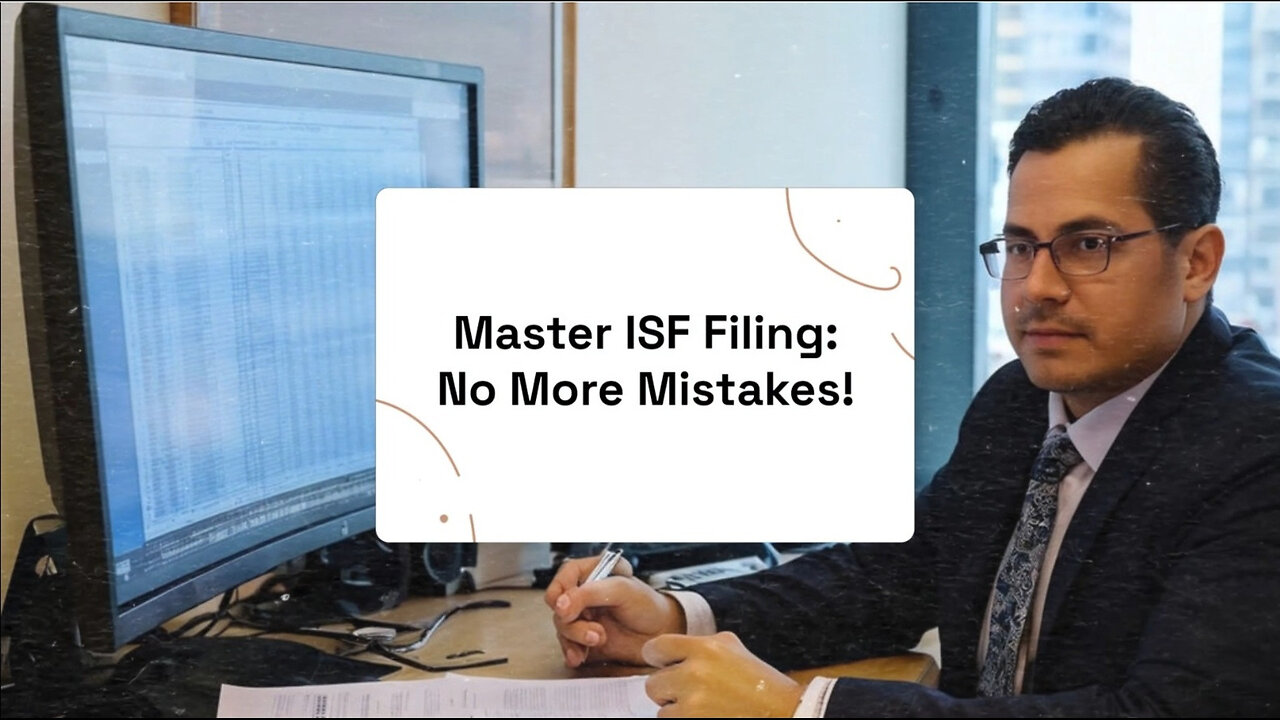Premium Only Content

Mastering ISF Filing: How to Avoid Costly Mistakes
ISF Filer || isf@isffiler.com || 858-280-9374 || www.isffiler.com
In this video, we discussed the important points to keep in mind when filing an Importer Security Filing (ISF) to avoid common mistakes and ensure smooth customs clearance. The ISF, also known as the 10+2 filing, requires importers to provide specific information about their cargo to US Customs and Border Protection (CBP) before the cargo is loaded onto a vessel bound for the United States. Failing to file the ISF within the required timeframe can result in penalties and cargo holds, so it's crucial to understand the cutoff times and work closely with a customs broker for timely submission.
Another mistake to avoid is providing inaccurate or incomplete information on the ISF. This includes details such as shipper information, consignee information, bill of lading number, HTS codes, and more. Any missing or incorrect information can lead to delays, fees, and customs exams. Double-checking the provided information and collaborating with a customs broker is essential for accuracy.
An often overlooked aspect of ISF filing is ensuring the correct bond information. A customs bond is required by CBP and guarantees the payment of duties, taxes, and fees on imported goods. Without a valid bond, the ISF filing cannot be completed. Working closely with a customs broker to provide the correct bond type and amount is crucial for a successful ISF filing.
Importers should also pay attention to supplier and manufacturer information. Accurate and up-to-date details regarding the entities involved in the supply chain are important to avoid complications during customs clearance.
To mitigate these ISF filing mistakes, it is highly recommended to work with a reputable customs brokerage firm. Customs brokers have the knowledge and experience to navigate complex customs regulations, guide importers through documentation requirements, assist with bond arrangements, and help avoid costly mistakes.
In conclusion, understanding and avoiding ISF filing mistakes is vital for importers to ensure efficient trade operations and smooth customs clearance. By filing the ISF within the required timeframe, providing accurate and complete information, and collaborating with a customs broker, importers can navigate the process seamlessly, mitigate penalties and delays, and ensure the safety and security of their cargo.
#usimportbond #isfcustomsbroker #uscustomsclearing #isfentry
Video Disclaimer Here: This video is intended for educational purposes and has no affiliation with US government entities.
00:26 - Understanding ISF Requirements: The Importer Security Filing (ISF), or 10+2 filing, mandates that importers submit specific cargo information to U.S. Customs and Border Protection (CBP) at least 24 hours before loading onto a vessel, allowing CBP to assess security risks.
00:54 - Timely Filing: Importers must file the ISF within the designated timeframe to avoid penalties and cargo holds. It's essential to be aware of deadlines and collaborate with customs brokers for timely submissions.
01:15 - Accuracy of Information: Providing complete and accurate details, such as shipper and consignee information, bill of lading numbers, and HTS codes is crucial. Errors or omissions can lead to delays and additional costs.
01:43 - Collaboration with Customs Brokers: Working with reputable customs brokerage firms can help importers navigate ISF filing requirements, ensure the correct bond information, and avoid common mistakes, ultimately facilitating smoother customs clearance and trade operations.
-
 13:43
13:43
Cooking with Gruel
2 days agoCreamy Saffron Risotto
97.2K20 -
 18:38
18:38
DeVory Darkins
1 day ago $23.40 earnedTrump Makes HUGE Announcement that may spark GOP Battle
67.5K76 -
 2:13:05
2:13:05
The Nerd Realm
12 hours ago $5.17 earnedNew Years Eve! Fortnite Hunters w/ YOU! Creator Code: NERDREALM
58.3K4 -
 11:04:44
11:04:44
FusedAegisTV
1 day agoNYE Eve! - 2025 Incoming 🎉 - 12hr Variety Stream!
124K6 -
 1:18:52
1:18:52
Awaken With JP
15 hours agoSomehow The World DIDN’T End This Year! - LIES Ep 72
160K82 -
 1:19:34
1:19:34
Michael Franzese
13 hours agoWhat 2024 Taught Us About the Future?
129K32 -
 1:48:09
1:48:09
The Quartering
14 hours agoBird Flu PANIC, Sam Hyde DESTROYS Elon Musk & Patrick Bet David & Woke Witcher?
135K77 -
 4:47
4:47
SLS - Street League Skateboarding
3 days agoLiz Akama’s 2nd Place Finish at SLS Tokyo 2024 | Best Tricks
59K5 -
 4:06:54
4:06:54
LumpyPotatoX2
13 hours agoHappy New Year Rumble ! - #RumbleGaming
42.6K -
 10:37
10:37
One Bite Pizza Reviews
1 day agoBest of Barstool Pizza Reviews 2024
68K32